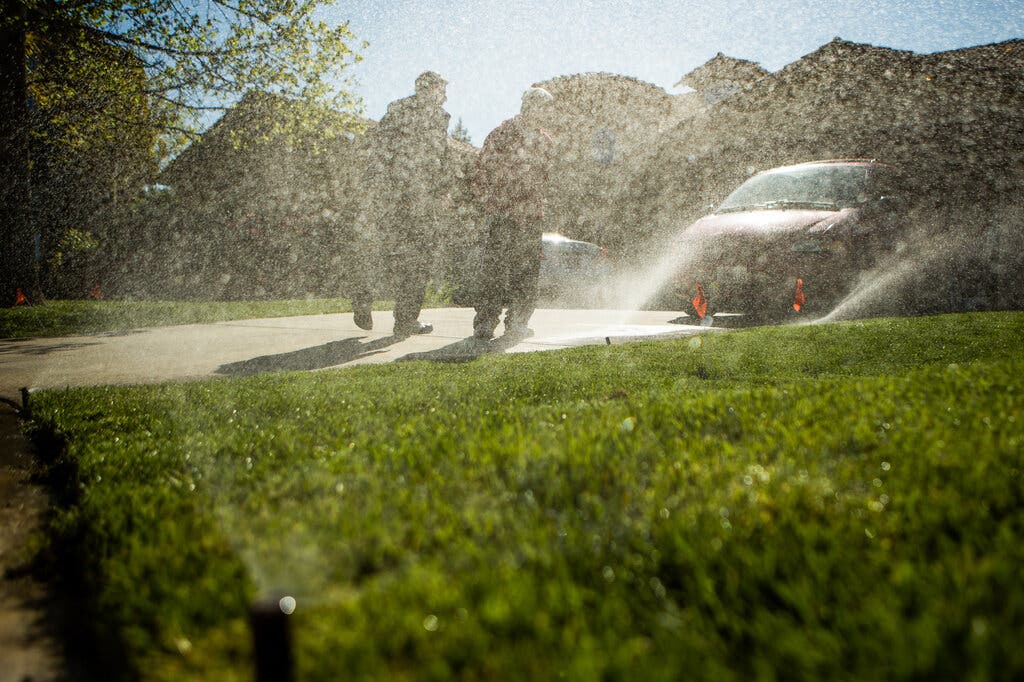Here’s Where California Really Uses Its Water


For Californians still clinging to the myth that we’re not in the midst of a severe drought, a brutal reality awaits.
With a dry winter projected for much of the state, California officials are considering fines of up to $500 a day for overwatering yards, hosing down driveways and other water-wasting actions. The state’s water board could impose the penalties as soon as next month, when they come up for a vote.
You may be wondering: What about mandating shorter showers? Fewer toilet flushes? Using the dishwasher only when it’s full?
There’s actually good reason those measures aren’t atop the water-saving list. While in-home conservation doesn’t hurt, a majority of California’s residential water — as much as 80 percent of it — is used outdoors.
Take this example: When California was slammed with an atmospheric storm in late October, many of us skipped watering our lawns. After months of water savings of no more than 5 percent compared with last year, Californians’ water usage in October dropped to 13.2 percent below the rate in October 2020, according to new state data. While still short of Gov. Gavin Newsom’s 15 percent target, it’s the closest we’ve come.
“This jump in water savings we saw across the state can illustrate just how much water can be conserved when we’re not irrigating outdoors, even for just part of the month,” said Charlotte Ely, who presented the savings data to the State Water Resources Control Board this week.
Half of California’s annual water usage is considered environmental water, meaning it flows through protected rivers or supports wetlands in wildland preserves, according to the Public Policy Institute of California. The other 50 percent is for human use — 40 percent for agriculture and 10 percent for urban use, split between indoor (drinking water, showers) and outdoor (lawns, washing our cars).
But the relatively warm, dry weather in California tips the scales toward outdoor consumption. Plants quickly evaporate water, so keeping them green is more water-intensive than in other parts of the nation, said Jay Lund, co-director of the Center for Watershed Sciences at the University of California, Davis.
“Our per capita water use rates are much, much, much higher than they are back east, where they have rainfall in the summertime,” Lund told me.
While the average Californian uses roughly 110 gallons of water a day, a person in Massachusetts, for example, consumes on average around 65.
And it’s not because heat makes us drink more water. Every day, the average human consumes one gallon, maybe two, Lund told me. So at most, that’s 2 percent of our total water usage.
Lund pointed to the water-saving success of Healdsburg, a town in Sonoma County that was facing a severe shortage this year. In June, officials banned residents from watering their lawns and yards.
Since then, the city’s water usage has fallen by 50 percent.
Medio: The New York Times
